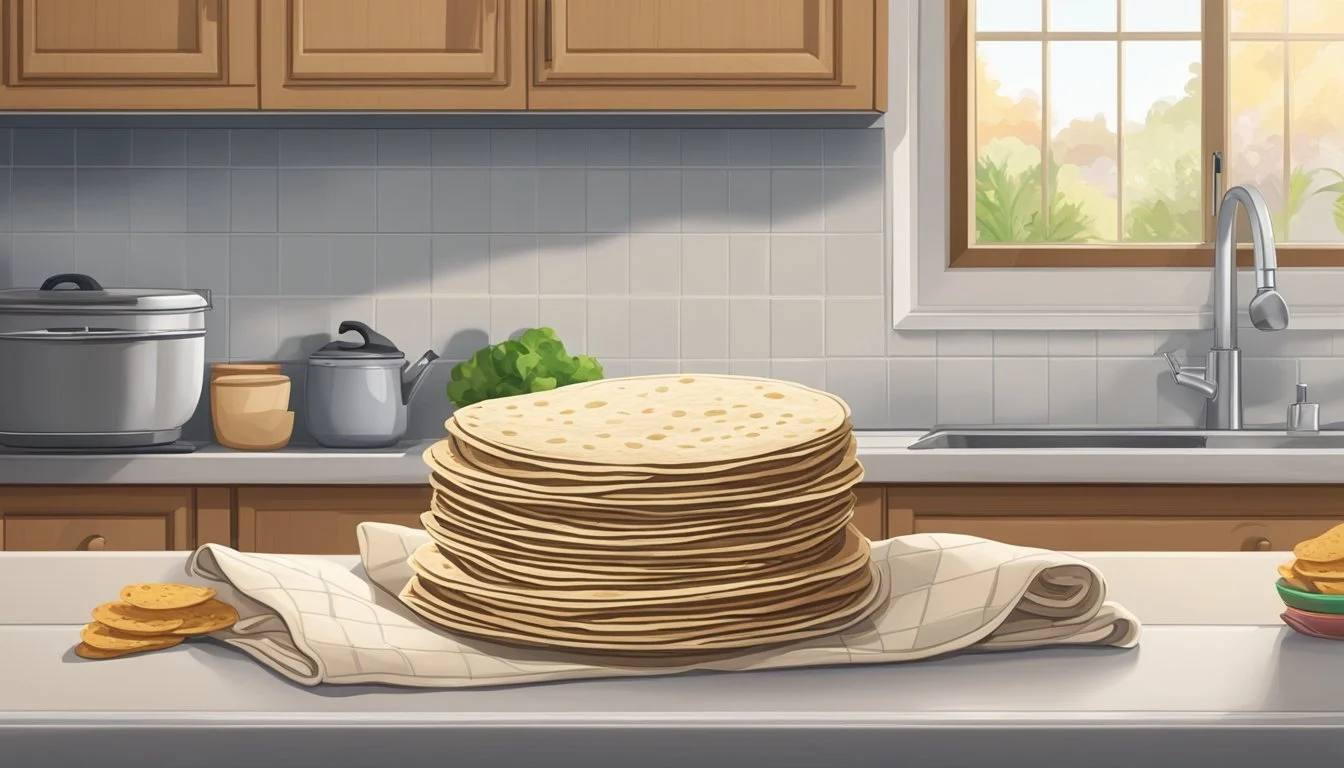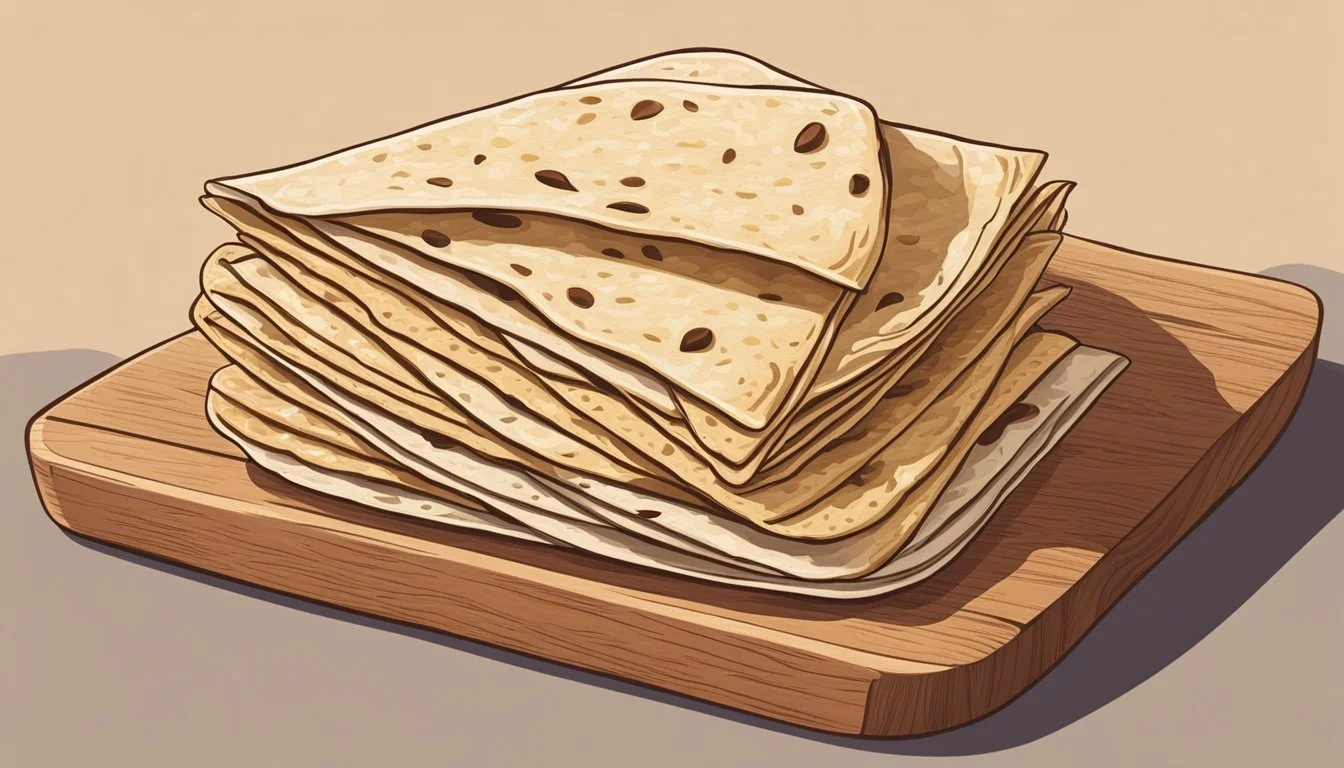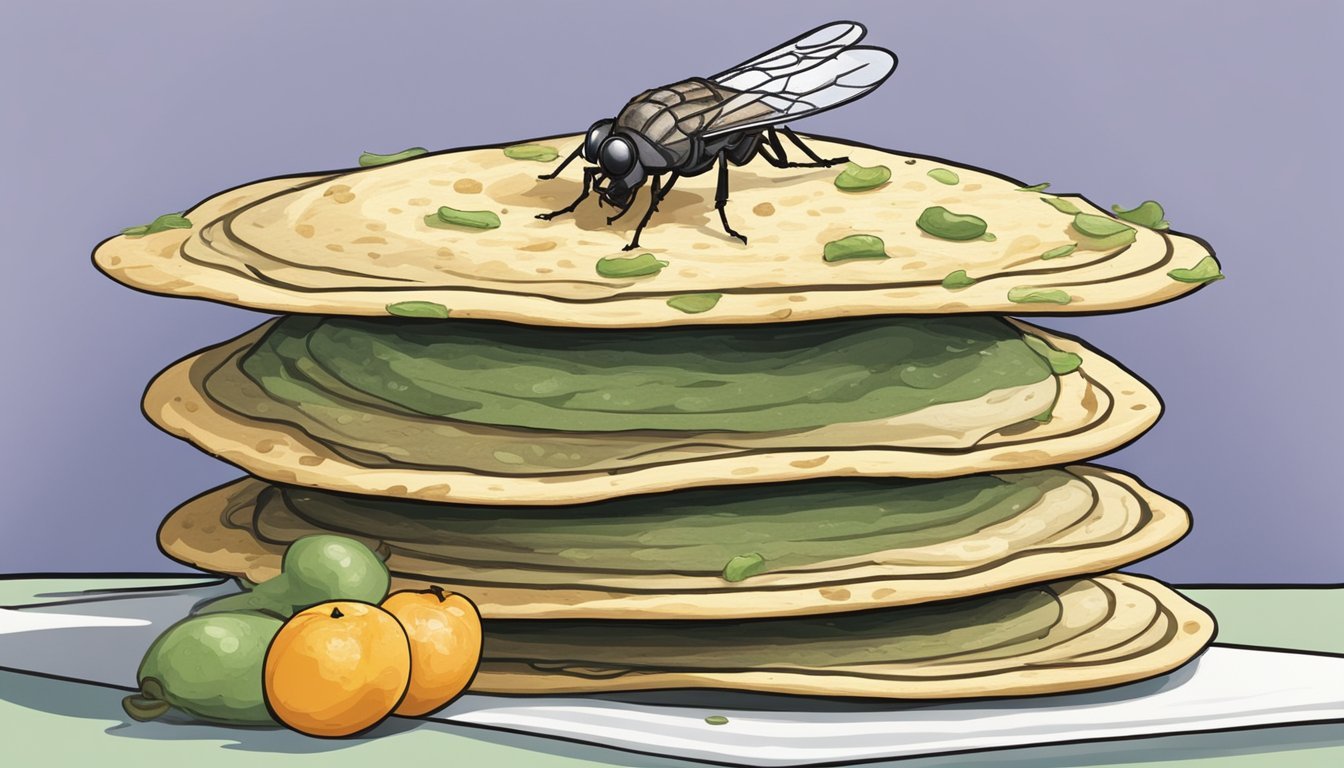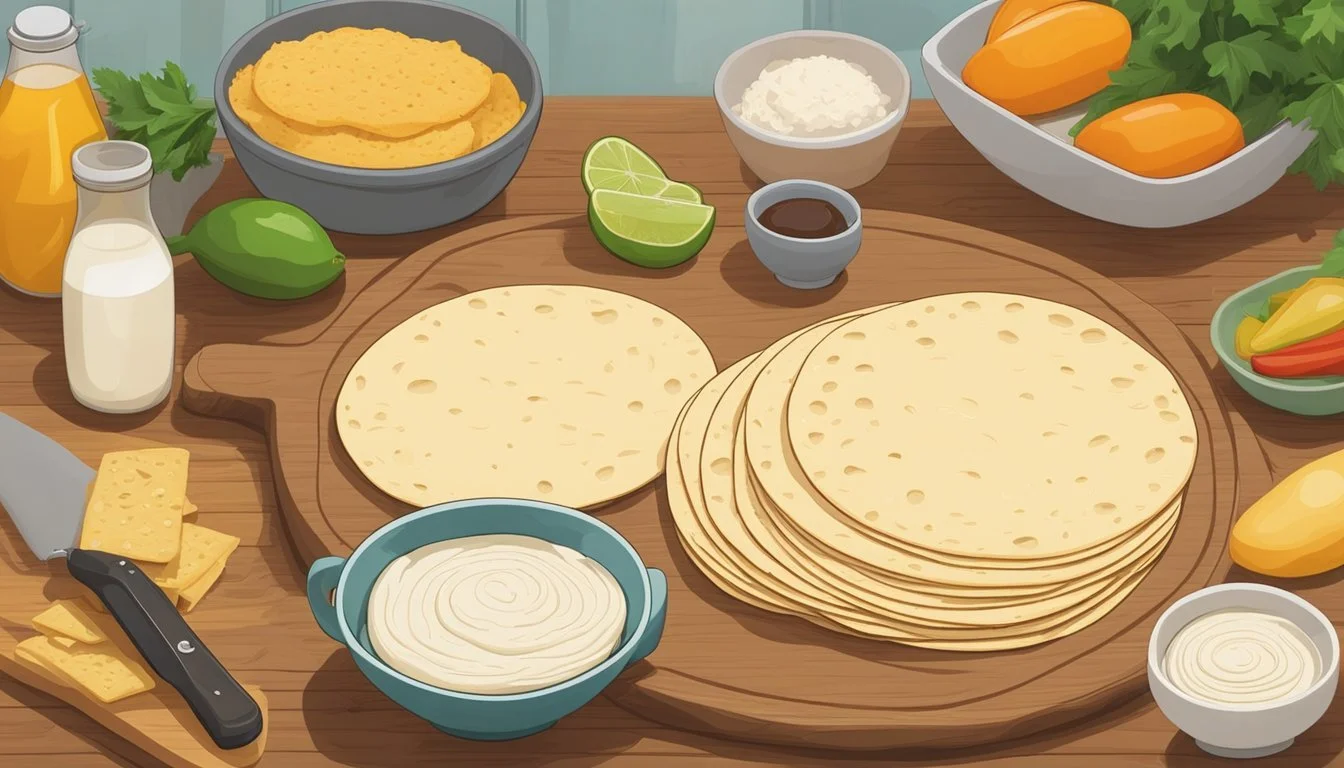How Long Do Tortillas Last?
Shelf Life and Storage Tips
When it comes to tortillas, their shelf life varies based on a myriad of factors, including the type, the ingredients, and the storage method applied. Typically, store-bought flour tortillas can last for about a week past their best-by date when kept at room temperature. If refrigerated, they can maintain quality for about a month. Corn tortillas, often more durable thanks to their ingredient composition, can last slightly longer than flour tortillas under similar storage conditions.
Homemade tortillas, on the other hand, have a shorter lifespan due to the absence of preservatives. They generally remain fresh for a couple of days at room temperature and could last up to a week if refrigerated. The specifics of how tortillas are stored play a pivotal role in their longevity. Factors such as humidity, temperature, and exposure to air can either shorten or extend their edibility.
In the freezer, both homemade and store-bought tortillas can last for several months, preserving their quality. Exposure to air can hasten the decline in texture and taste, so it's advisable to keep tortillas well-wrapped or in airtight containers. With proper storage, one can maximize the shelf life of tortillas and avoid waste, ensuring that these versatile staples are ready for use in a variety of culinary applications whenever needed.
Types of Tortillas
Tortillas come in various types, each with unique ingredients and uses. The most common include corn and flour tortillas, but variants like spinach and whole wheat are also popular for their distinct flavors and nutritional profiles.
Corn Tortillas
Corn tortillas are a traditional staple in Mexican cuisine. Made primarily from masa harina, a type of dough from ground nixtamalized corn, they are typically smaller, denser, and have a hearty, earthy flavor. They are often used for tacos, enchiladas, and tostadas.
Flour Tortillas
Flour tortillas are made with wheat flour and have a soft, pliable texture, making them ideal for burritos and wraps. Generally larger than corn tortillas, they have a neutral taste that doesn't overpower the flavors of the filling.
Spinach Tortillas
Spinach tortillas are a colorful variation, incorporating spinach to add a slight vegetable flavor and additional nutrients. They are often chosen for their vibrant green appearance and are used similarly to flour tortillas for wraps and sandwiches.
Whole Wheat Tortillas
Whole wheat tortillas are made from whole grain wheat flour and provide a healthier option with more fiber and minerals. They offer a nuttier taste compared to regular flour tortillas and serve well in health-conscious diets.
Storing Tortillas
To ensure tortillas remain fresh and safe to consume, specific storage methods should be employed. These methods vary depending on whether tortillas are stored in the pantry, refrigerated, or frozen, and can affect their shelf life significantly.
Pantry Storage
Tortillas can be kept in the pantry at room temperature. Flour tortillas typically last up to 7 days beyond their expiration date, while corn tortillas can remain good for about 10 days if they are kept in a cool, dry place. Storage tip: Keep them in their original packaging until ready to use, then seal them in an airtight container to protect against moisture and pests.
Refrigeration
Refrigerating tortillas can extend their freshness. An unopened package of flour tortillas can last for 7 days, whereas refrigeration can increase their life by an additional 4 weeks. Corn tortillas also benefit from refrigeration, staying fresh for up to 5-7 days. Important: Once the package is opened, ensure the tortillas are stored in an airtight container to prevent them from absorbing odors and moisture.
Freezing Tortillas
For long-term storage, freezing is the most effective method. Both homemade and commercially made tortillas can be frozen for 6-8 months. When freezing tortillas, separate them with parchment paper to prevent sticking and place them in a freezer-safe airtight container or zip-top bag. To use, thaw in the refrigerator overnight and then heat them up for optimal freshness and pliability.
Shelf Life
The shelf life of tortillas varies depending on whether they are store-bought or homemade, and if they remain unopened or have been opened. Understanding the different storage conditions and timelines ensures optimal freshness and edibility.
Unopened Tortillas
Store-bought, Unopened Tortillas:
Best by Date: Typically displayed on the label.
Pantry:
Flour Tortillas: Up to 2 weeks.
Corn Tortillas: 1 week to 10 days.
Refrigerator:
Both types can last up to 30 days past the sell-by date.
Homemade Tortillas
Homemade Tortillas:
Without preservatives, their shelf life is shorter.
Pantry: 2-3 days.
Refrigerator: 5-7 days.
Freezer: 6-8 months, although quality may decline over time.
Opened Pack
Opened Tortillas:
Seal tightly to prevent exposure to air and moisture.
Refrigerator Shelf Life:
Flour Tortillas: Remain fresh for up to 1 week after opening.
Corn Tortillas: Slightly longer than flour tortillas.
Entities such as expiration date and best by date refer to the last date a manufacturer will vouch for product quality, not safety. A sell-by date indicates to the retailer how long to display the product for sale. For peak quality, adhere to these dates but assess tortillas for signs of spoilage like mold and off odors before consumption, as they may still be safe to eat beyond these dates if stored properly.
Signs of Spoilage
Identifying when tortillas have gone bad is crucial to avoid consuming spoiled food. The following signs can indicate spoilage and should be taken seriously to ensure food safety.
Mold and Mold Growth
Visible mold is one of the most obvious signs of spoilage in tortillas. It can appear as fuzzy spots or patches in various colors. If mold growth is observed, the tortillas should be discarded immediately, as mold can penetrate below the surface.
Discoloration
A change in color can signal that tortillas are no longer safe to eat. Look for any discoloration or spots that differ from the tortilla's original color. Areas that appear darker or have developed an unnatural hue are indicative of spoilage.
Unusual Smell
A sour or off smell is a tell-tale sign of spoilage. If the tortillas emit an unusual smell, it is advisable not to consume them. The odor may be distinctly moldy or just not quite right.
Texture Changes
Fresh tortillas are typically soft and pliable. The presence of stiffness or a dry, hard texture implies that the tortillas are past their prime. Additionally, tortillas that feel slimy or tacky are likely spoiled and should not be eaten.
Food Safety Tips
When it comes to food safety, ensuring proper handling and storage of tortillas is critical to extending their shelf life and preventing foodborne illnesses.
Proper Food Storage
Storing tortillas correctly is essential for maintaining their freshness and edibility. They should be kept in an airtight container or a resealable zip-top bag to protect them from moisture and other contaminants. For longer shelf life, one can refrigerate or freeze tortillas; refrigeration can typically extend their freshness up to 6-8 months. The storage area should be cool and dry if they are being stored in the pantry.
Handling Expired Tortillas
When tortillas surpass their expiration date, they are not necessarily unsafe to eat, but their quality may decline. One should inspect expired tortillas for signs of spoilage, such as an off smell, mold, or a hardened texture before deciding to toss them away. However, if tortillas show any signs of spoilage, it is prudent to discard them to avoid any potential health risks.
Preventing Foodborne Illness
To minimize the risk of foodborne illness, one should always practice safety techniques when handling any food, including tortillas. This includes washing hands thoroughly before and after handling food, cleaning surfaces that come in contact with food, and avoiding cross-contamination with raw meats or other potential sources of microbes. Any tortillas that have been left out at room temperature for more than two hours should be discarded to prevent the growth of harmful bacteria.
Utilizing Tortillas in Cuisine
The flexibility of tortillas is showcased in the vast array of dishes they can create, ranging from traditional Mexican cuisine to inventive modern recipes. They are integral in delivering the authentic tastes of Mexico and accommodating the creative spin of contemporary cooking.
Traditional Mexican Dishes
In Mexican cuisine, tortillas are the cornerstone for many classic dishes. Tacos are a quintessential use, where soft corn tortillas cradle a variety of fillings like grilled meats, fresh salsa, and creamy guacamole. Enchiladas feature tortillas rolled around a filling, typically smothered in a chili sauce and baked with cheese.
Another popular dish is tortilla soup, a hearty and flavorful concoction that often contains crispy tortilla strips, adding a delightful texture contrast. Tostadas utilize tortillas that are fried or baked until crisp and then topped with a smorgasbord of ingredients, creating a dish that is both satisfying and visually appealing.
Modern Interpretations
Chefs often explore modern interpretations of tortillas in their culinary creations. They serve as a vessel for a variety of non-traditional ingredients, producing new favorites such as fusion-style burritos that may include international flavors like Korean barbecued beef or Mediterranean-spiced vegetables.
These contemporary dishes accentuate the versatility of both corn and flour tortillas as they adapt to any flavor profile. More so, they can be used to innovate and create unique appetizers, main courses, and even desserts that push the boundaries of traditional Mexican fare.
Recipes and Leftovers
Tortillas are often featured in recipes that can be expedited by using leftovers. A chef might utilize leftover grilled chicken or roasted vegetables from a previous meal to construct quick and satisfying tacos or burritos. Stale tortillas can be given new life too, transformed into homemade tortilla chips or used as a base for a layered casserole.
Here's an application of using leftover and stale tortillas:
Leftover Tortillas:
Chicken Tacos: Shred leftover roasted chicken, (What wine goes well with roasted chicken?) add to a warm tortilla with diced onions, cilantro, and a squeeze of lime.
Vegetable Burrito: Use leftover sautéed vegetables; roll them up in a flour tortilla with rice and beans for a filling meal.
Stale Tortillas:
Tortilla Chips: Cut stale tortillas into wedges, lightly oil, and bake until crisp for a homemade snack.
Casserole Base: Layer stale tortillas in a baking dish with sauce and cheese for an easy tortilla casserole.
In summary, the durability and adaptability of tortillas make them an invaluable ingredient across various styles of cooking, whether traditional or contemporary.






